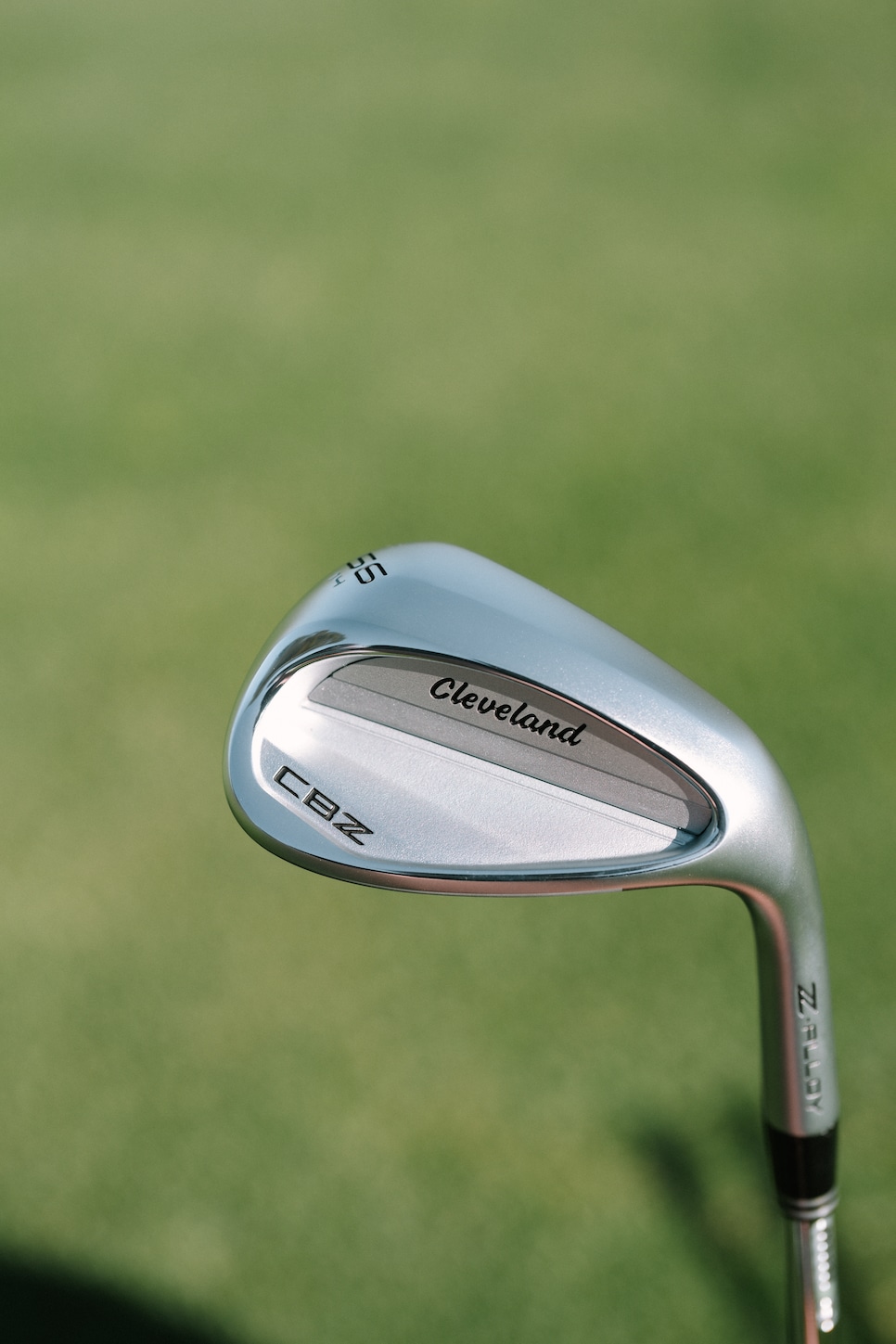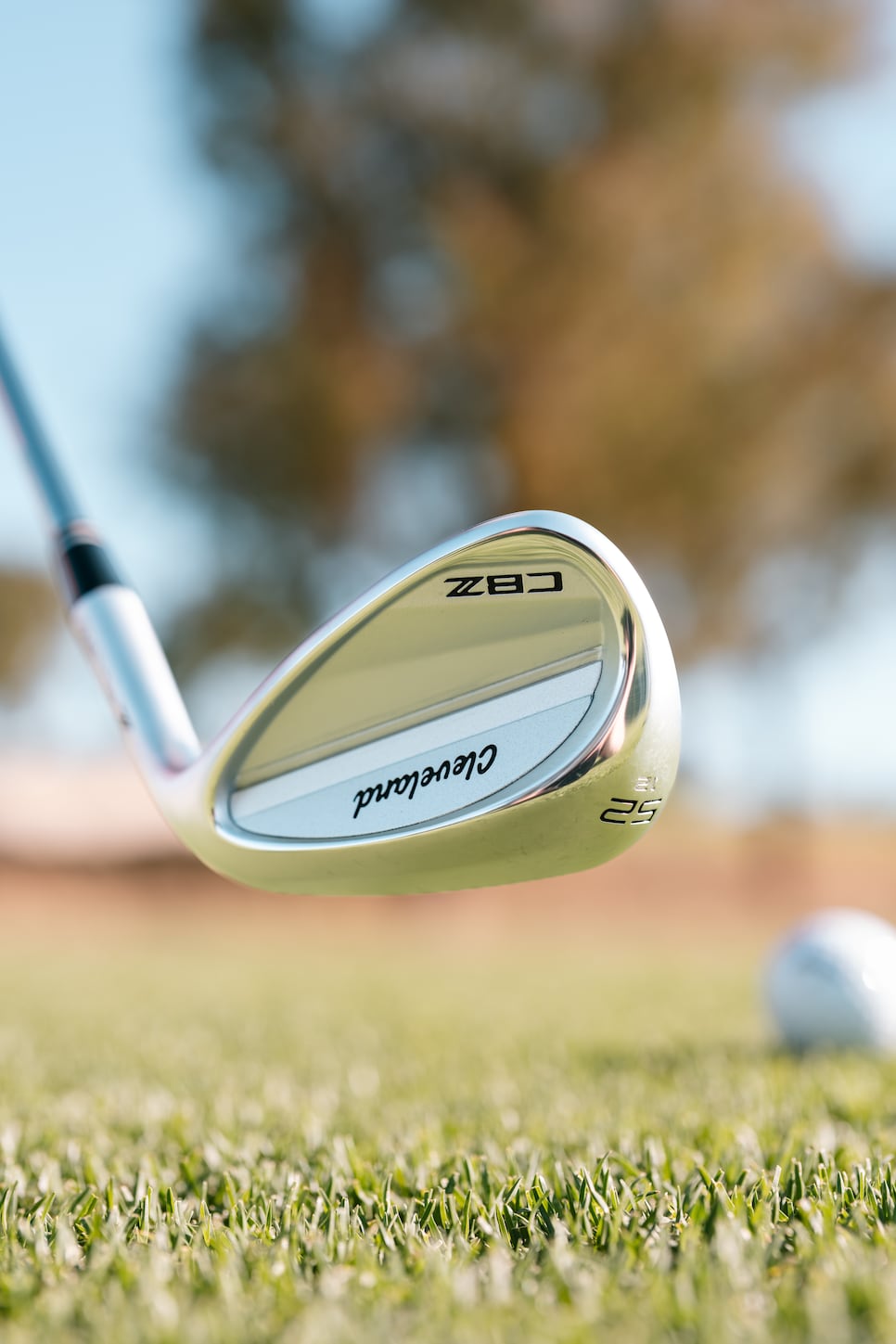WHAT YOU NEED TO KNOW: The Cleveland CBZ marks the fifth generation of the company’s cavity back wedges, and this newest model charts a fresh path forward in feel by employing the same Z-alloy found in the company’s tour-played RTZ line. Developed entirely in-house solely for the purpose of wedge design, the Z-alloy is 25 percent softer than the 431 stainless steel used in past CBX models.
TOUR NEWS: Australian Open winner to add Masters invitation to Open Championship start

PRICE: TBC, offered both in standard and full-face grooves models. Standard: 9 lofts, 44-60 degrees. Full Face: 6 lofts, 50-60 degrees. In stores Sept. 5.
3 Cool Things
1. Soft target. Cleveland has long made the case with its cavity back lineup of wedges that more golfers should be using this kind of wedge than the traditional blade-like designs that are most played on tour and most popular in the marketplace. How many players? A lot more. According to the company’s research, nearly 9 in 10 golfers would be better off with cavity back wedges like the new CBZ for the simple reason that about 87 percent of golfers, according to the company’s research, play cavity back irons. That’s what led to the original CBX wedges eight years ago, and while the company has continued to improve the forgiveness, sole designs and groove shaping to equal its tour-played models, this new version seems a more dramatic step forward in feel, thanks to the use of Z-Alloy, the proprietary steel developed specifically for use in wedges. That’s a significant switch from 431 stainless steel, which might be easier to cast but is a step function firmer than Z-Alloy, which is the foundation for Cleveland’s RTZ wedges. It’s 25 percent softer when measured on the Vickers hardness scale, according to Cleveland’s research.
RELATED: Complete guide to the Tailor-Made Building Services NT PGA

“While 431 is durable, its hardness and lower density come at the cost of feel,” said Boeing Smith, senior research engineer at Cleveland Golf. “Z-Alloy changes that. It’s significantly softer and less dense than 431, delivering tour-level feedback traditionally reserved for blade wedges. Now, golfers who prefer to play cavity back models no longer have to sacrifice feel.”
Although the use of Z-Alloy saves only about an extra gram that can be redistributed to improve stability on mishits both from heel to toe and sole to crown, its material softness makes it a potential game-changer to get more golfers to consider playing a cavity back wedge. Logically, the mass properties and forgiveness are fundamentally better for the majority of average golfers who still play blade-style wedges despite using cavity back irons. Z-Alloy is a paradigm shift in feel for cavity back wedges, a characteristic that many players might elevate higher than forgiveness when it comes to wedges. That could change a lot of minds that should be changed, said Dustin Brekke, Cleveland’s director of engineering.
“Certainly, the numbers say more players should be playing this kind of wedge,” he said. “And we’ve put premium face technologies into these wedges, we’ve had sole designs that are crafted and shaped for these players, we’ve explored optimising the centre of gravity and moment of inertia. And now with our Z-Alloy there’s nothing missing now. This really is a milestone for us.”

The Z-Alloy helps in pushing the CG location in the CBZ wedges more toward the centre of the face and actually microscopically toward the toe and lower. While traditional wedges have to fight to overcome a heel-sided CG bias, Cleveland’s research says that about 80 percent of the shots from mid- to high-handicap golfers are toward the centre and toe of the club, right where CBZ’s sweet spot is designed to be, Brekke said.
The feel equation is further enhanced by the company’s proven “gelback” insert in the cavity, a thermoplastic urethane polymer designed to control unwanted vibration and sound. That gelback not only blends in for a cleaner all-steel muscle-back look, it’s 94 percent larger than in the CBX4 to enhance feel on both centre and off-centre impacts.
2. Hidden in plain sight. Not to be overlooked, Cleveland’s work in optimising CG location is driven largely through the use of its “ZipCore” technology. Within the heel and hosel sits a lightweight piece made of an aluminium silicate compound that is four times lighter than the steel it replaces. That weight savings helps to position the CG in the centre of the face and while it also helps to enhance feel, it leads to more consistency in shot dispersion, too. Cleveland’s research shows that the stability of the cavity back design leads to shots falling more than 10 yards short of their target as much as 40 percent less often than traditional blade-like designs.
3. Options. The complexity of wedge sole grinds and bounce angles can be a lot for even an elite player to fully decode so Cleveland has been consistent about simplifying the concept in its cavity back designs over the years. The same is true again with CBZ. Each loft comes with a specific sole design and bounce angle already built in. That includes a V-shaped sole more like that found on irons to prevent digging that will be used on the lower lofted models, which are geared to more full swing shots with an overall more iron-like shape. The transitional sand wedge lofts at 54 and 56 degrees feature an S-shaped sole with added bounce for use in bunkers. Finally, the higher lofts utilise a C-shaped sole with heel and toe relief for improved versatility on short shots around the green, especially those played with an open face.

The CBZ lineup also includes six lofts from 50 to 60 degrees that will be offered with full face grooves. That provides greater area for the company’s UltiZip grooves and HyrdaZip face treatment to impart optimal spin.




